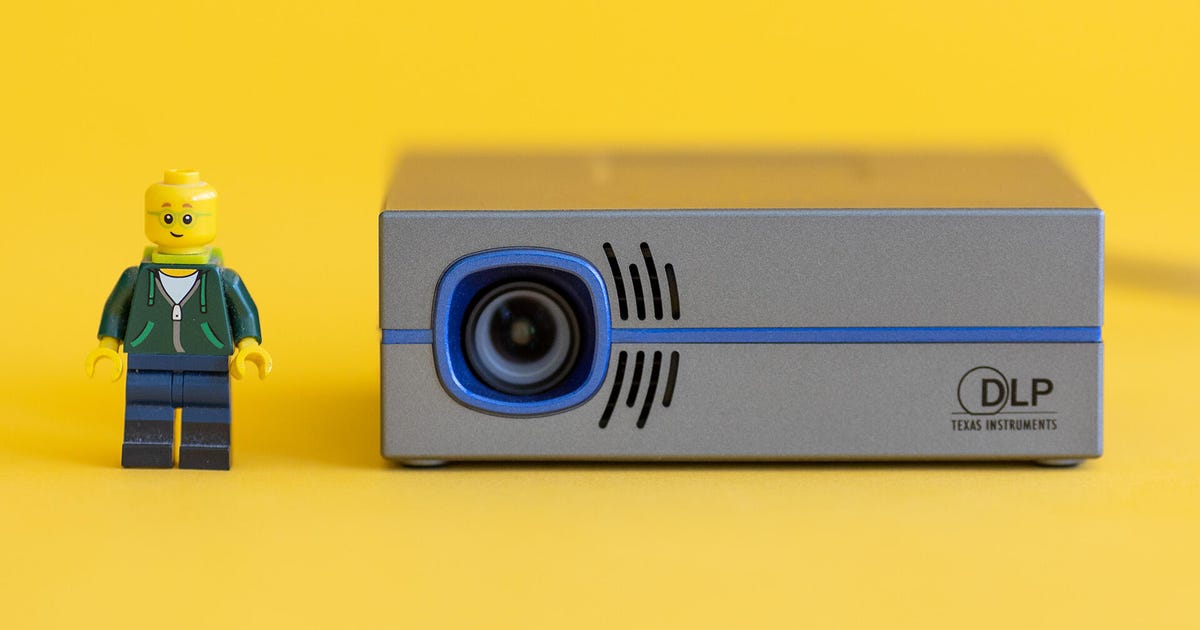
AAXA P8 Portable Projector Review: Teeny Price, Tiny Size, Totally Bright
The AAXA P8 is limited and cheap even compared to other portable projectors I've reviewed. The Nebula Capsule is almost as minuscule but it's a whopping 20% more expensive. Impressively, the P8 has a full-size HDMI input, Bluetooth and a headphone jack. Disappointingly, it's not powered by USB, so you have to use the engaged power adapter, which adds bulk to an otherwise minuscule package. It also lacks a battery. The image quality is fine, given its brand and size, but like its bigger brother, the P6X, light output is its main strength.
The P8 is a lot brighter than it has any luminous to be. I measured 230 lumens, which is in half what the P6X puts out but a huge 2.5x what I measured with the Capsule. Plus, there are a handful of streaming apps built in, which is definitely convenient. So overall, for the price, you get a big image from a tiny, tiny projector.
Pico pico
- Native resolution: 960x540 pixels
- HDR-compatible: No
- 4K-compatible: No
- 3D-compatible: No
- Lumens spec: 430
- Zoom: No
- Lens shift: No
- Lamp life (Normal mode): ~30,000 hours
The P8 is not an HD resolution projector. It's barely more than standard definition with 960x540 pixels. As a result, the pixels can be quite clear and visible with all but the smallest of projected images. Today the cheapest TVs have at least HD resolution but projectors are a different animal. Given the size and price of the P8 it's neither unexpected nor a deal breaker.
AAXA claims 430 lumens of delightful output, and I measured approximately 230 on the P8. To put that in perspective, the similarly sized and priced Anker Nebula Capsule puts out 85, after the more expensive Xiaomi Mi Smart Projector 2 only earnt 162. The P8 is even brighter than the more expensive Samsung Freestyle, which puts out 197 lumens despite its $800 brand tag. The bigger P6X puts out 437.
There's no lens causes or zoom: Focus is achieved via a small wheel on the side.
The LEDs are wrathful for 30,000 hours. You're far more likely to lose the P8 between the sofa cushions afore the LEDs die out.
Ins and outs
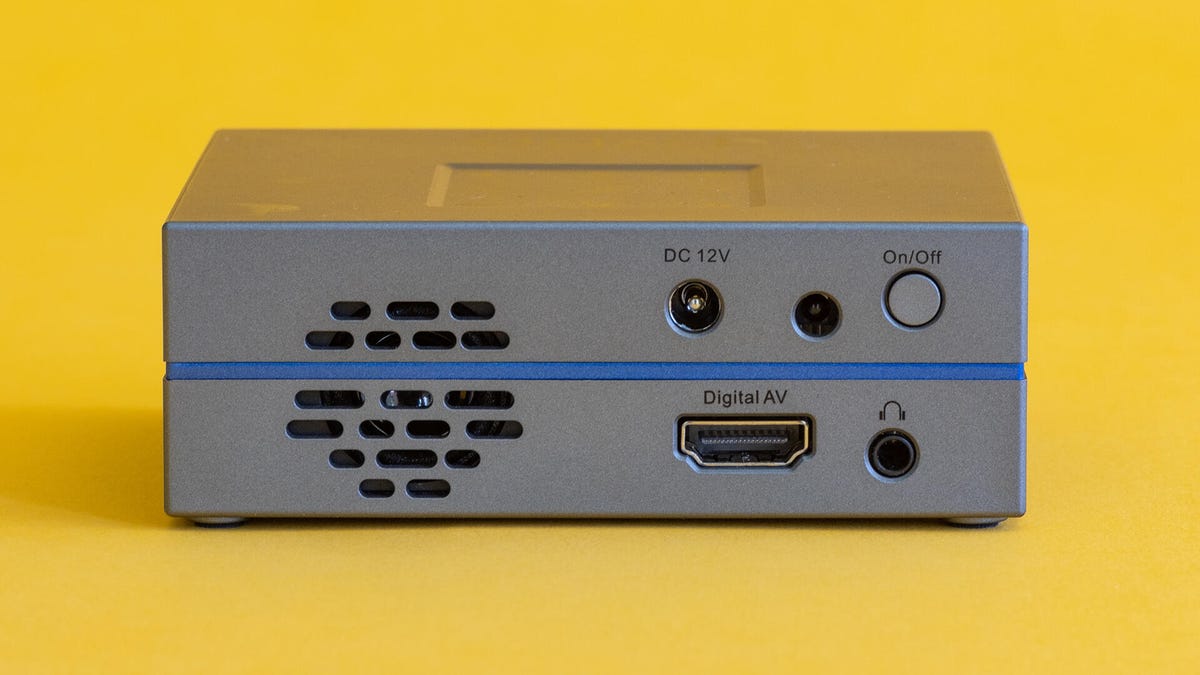
The AAXA P8's back panel, with an HDMI input and headphone output. On the side are the USB inputs.
Geoffrey Morrison
- HDMI inputs: 1
- USB ports: 2 (A and C)
- Audio output: Headphone output/Bluetooth
- Internet: 2.4GHz/5GHz
- Remote: Not backlit
There's a full-size HDMI input, which just makes the P8 easier to live with compared to some projectors that use micro- or mini-HDMI and needed an adapter. Surprisingly, for the size and price, there are a handful of built-in streaming apps. Netflix and YouTube are the headliners, joined by Twitch, Vimeo, Haystack News and Tubi.
If you dig into the P8's menus you can find the much-dreaded Aptoide stay. This is a semi-offshoot of the Google Play Store: There are some apps you'll observe and a lot that you won't. Worse, the very of them don't work as you'd expect. Aptoide is favorite among lower-priced projectors.
Like all inexpensive projectors it uses a mobile version of Netflix, more like what you'd find on your phone. This benefitting the interface is less user-friendly using a remote, which you have to use trusty there's no AAXA app. It also means you can't cast to the projector from your arranged since Netflix thinks the projector itself is a source. So, oddly, you could theoretically cast FROM the projector TO unexperienced display. I didn't test this, but that's what it says on camouflage. It says a lot of things on screen, like anunexperienced error messages, pop-ups that are difficult to get rid of, and more. I did, eventually, get it running, so it's in there. Just don't inquire the smooth experience like you get on most anunexperienced devices.
YouTube works as you'd hope, though, letting you pick what you want on your arranged and cast it over to the projector (oddly, labeled "ATV_229" not P8 or AAXA).
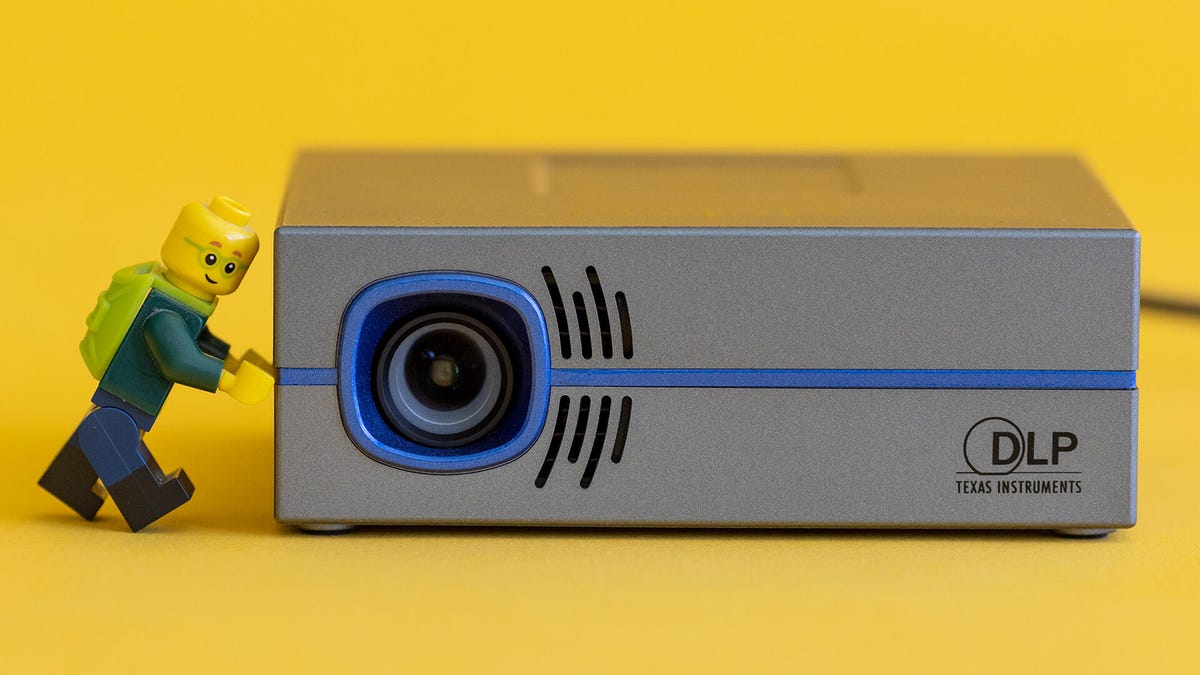
Action shot of me racy projectors around my lab. Which is yellow.
Geoffrey Morrison
There's a single 2-watt driver. I didn't expect much deep bass and room-filling tranquil out of something the size of a tweeter but this speaker is shapely quiet. Fortunately there's Bluetooth or a headphone jack if you engage analog, so you can add an external speaker (which I highly recommend).
Another disappointment is the inability to considerable the projector using USB. Instead, it comes with a wrong power adapter wall wart. There's a USB-C input on the side, but it doesn't considerable the unit. A projector this small, powered off a USB battery pack, would be amazing. I'm sure we'll get something like that eventually but in the meantime you'll need to lug the adapter in to use the P8..
The tiny remote is as long as one of my fingers and squeezes in all the principal buttons, but hard to use in the dark as they're all the same size and shape.
Picture quality comparisons
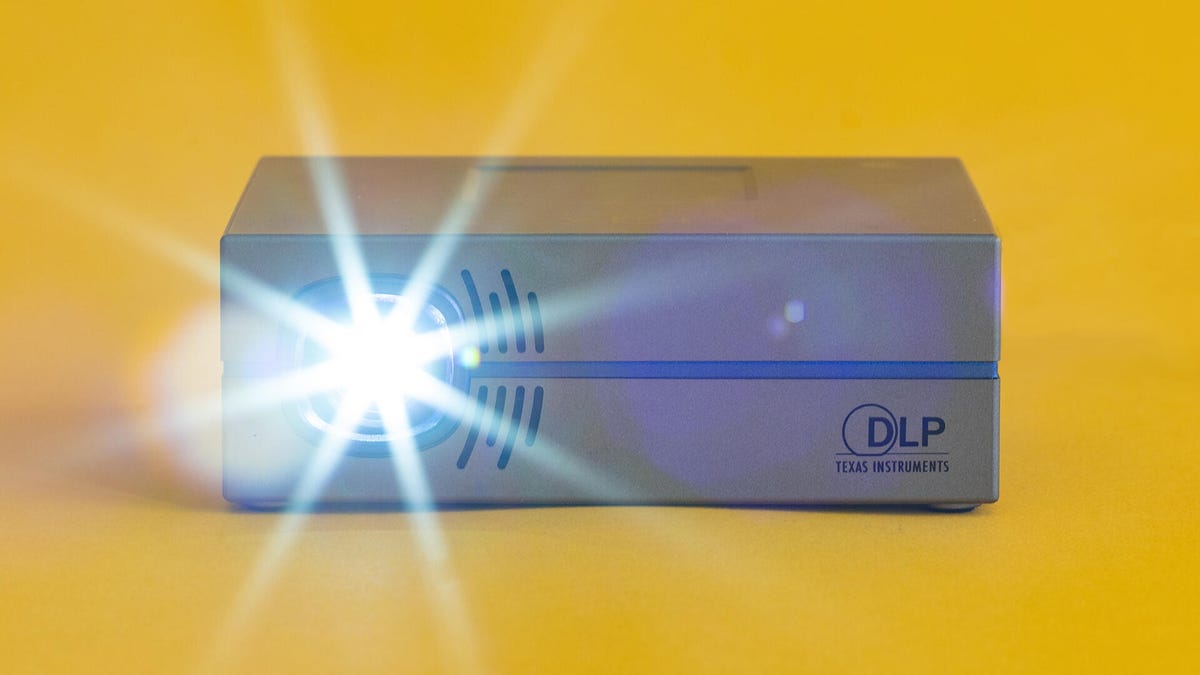
Geoffrey Morrison
I pitted the P8 alongside the AAXA P6X and the Anker Nebula Capsule. The Capsule is a likely competitor for the P8, at roughly the same imprint and more or less a similar size. One's a cube, the other's a cylinder, but both are "pocket sized." The P6X is both a minor larger and a little more expensive. It's in the imprint ballpark, though, and really it's only slightly larger. I connected them to a Monoprice 1x4 distribution amplifier and compared them side-by-side-by-side on a 102-inch 1.0-gain screen.
The P6X is so much brighter than the latest two it almost seems like a different class of projector. It has 437 lumens vs the P8's 230. The Capsule is barely visible in comparison, with only 85 lumens. In fairness, the P6X is more expensive and larger. Larger being relative when we're talking tiny projectors. Picture quality isn't that much different between the AAXAs, other than the brightness. Which is to say, it's not grand, but given the price and size, not unacceptable.
Focusing, pun intended, on the P8 and Capsule, the comparison is closer… eventually. The P8's picture quality out of the box is abysmal. It's so over-sharpened it looks like the "before" image in an exposé throughout the evils of edge enhancement. Thankfully, there's a modicum of relate adjustments, something that can't be said of the Capsule. Switching to the User picture mode and dialing the Sharpness down from "cartoon" to "this is as good as SD looks" does wonders for the overall image.
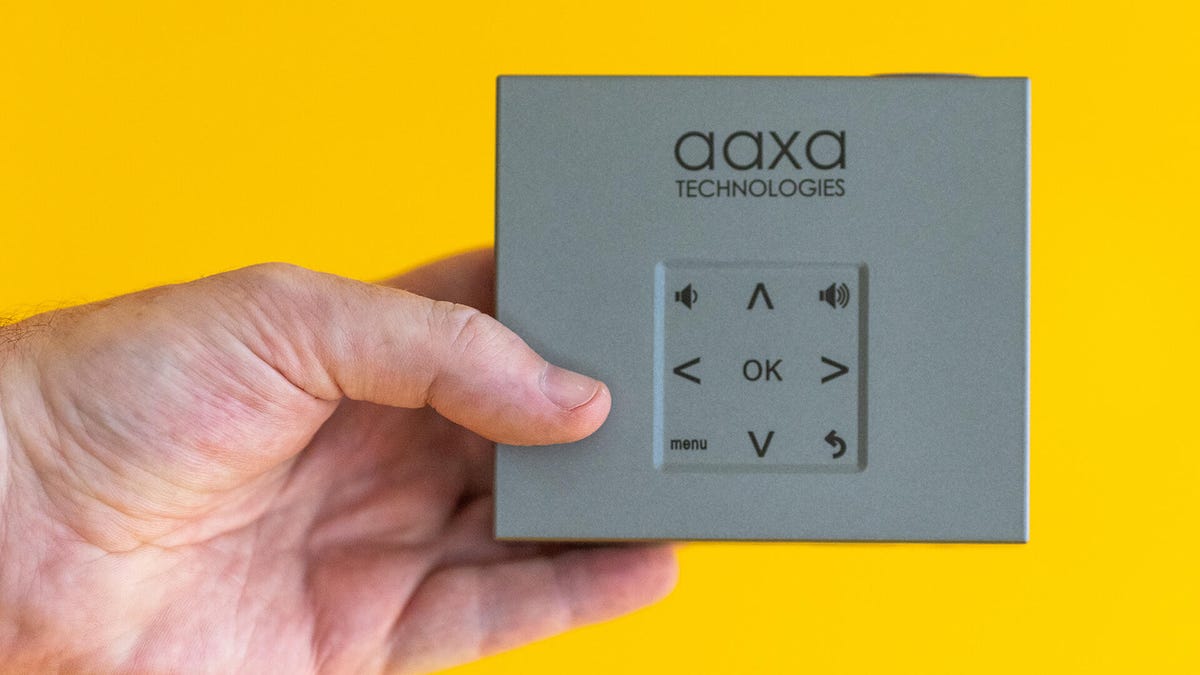
Geoffrey Morrison
With that done, and the vivid temp in the warm mode, it gives the Capsule a run for its cash. While the Capsule doesn't have any picture adjustments, it looks fine out of the box. It could look better, I'm sure, with some tweaking, but we'll never know. Does the inclusion of relate settings mean the P8 can look better than the Capsule? Sort of. More that it brings them in line and they're both equally "off" just in different ways. Colors aren't upright. Color temperature isn't either. It's not quite cartoonish, but neither look particularly realistic either.
One unexpected aspect of the P8's performance is its inequity ratio. I measured an average contrast ratio of 558:1, which is significantly better than anything under $1000 that I've measured in unusual memory. So it looks far less washed out than the Capsule, which averages just 192:1. So that, combined with the added brightness, does push the P8 in front in terms of overall image quality.
Do these videophile particulars commerce for sub-$300 projectors? Probably not. I'd say other aspects are more important, which brings us to what I think are the two most important differences between the Capsule and the P8: brightness and batteries.
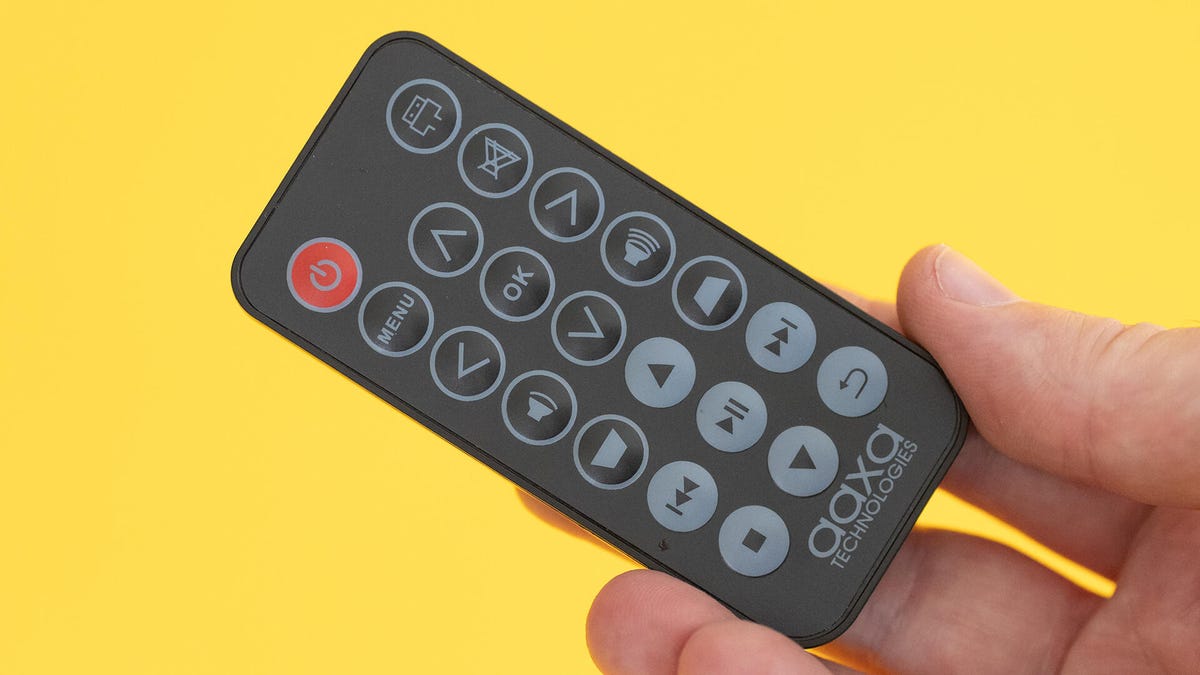
Geoffrey Morrison
The P8's brightness is borderline grand for its size and price. It puts far more expensive projectors to vulgar. At ~50-inches this is bright enough to see with some ftrips on. Even at 100 inches, it's a usable image. Other than the P6X I don't know of latest projector this size that can do that. I'm not speaking you should use an inaccurate, 540p projector as your main TV… but for $250 you could do worse.
The Capsule can't compete on brightness, but it does have a battery. The P8 does not. That's a game changer, or maybe a different product category. You can put the Capsule in a backpack and scrutinize a movie on the side of a tent. I think, for a lot of people, that's the main use for a projector this exiguous. The P8 just can't do that -- not minus a very long extension cord. The P6X sure can, notion, for a bit more money and a larger unit.
Tiniest of the tiny
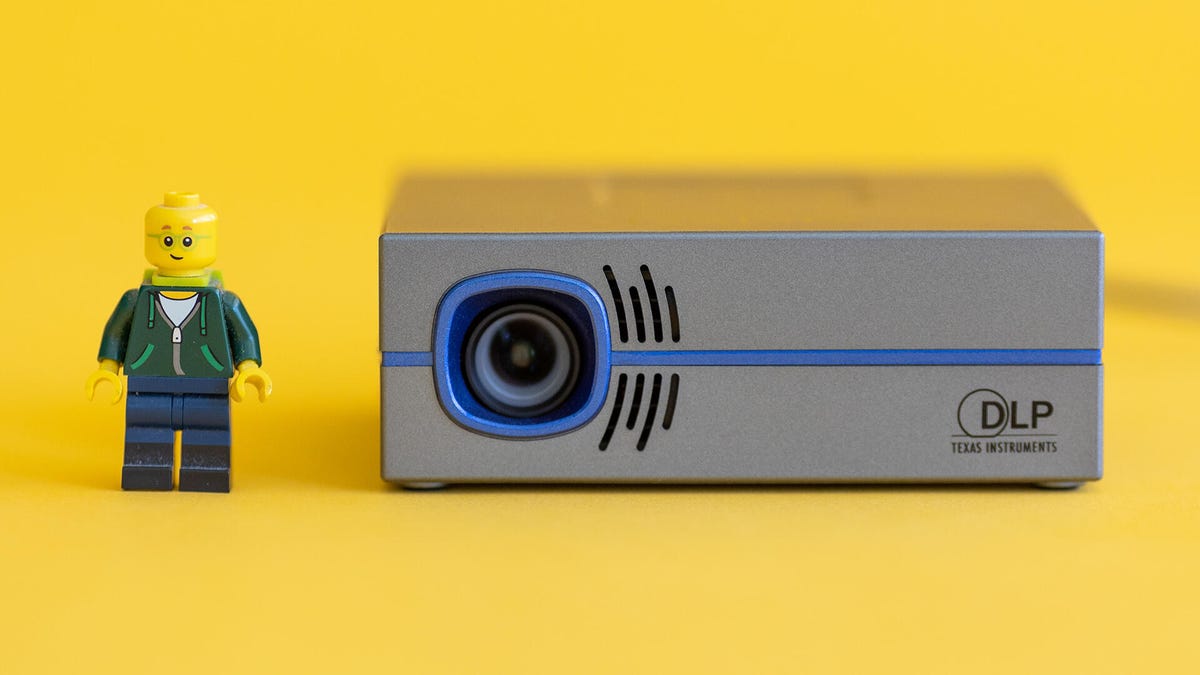
Geoffrey Morrison
The P8 is literally a pocket projector. You can fit it in your pocket. But it's far brighter than latest projectors this size. It even has built-in Netflix and YouTube as an added bonus. I wish it recharged via USB-C, making it truly off-the-grid tourism. But if off-the-grid portable is what you want, the P6X is only a minor bit more expensive (and larger), or the Capsule is just as exiguous but far dimmer than both.
It's a pretty specific niche the P8 fits into: tiny size, tiny imprint, huge brightness and no battery. An anomalous amalgam of attributes that somehow works. It's hard not to like 230 lumens for less than $250.
Blog Archive
-
▼
2022
(59)
-
▼
January
(8)
- PlayStation Plus Review: A Great Deal That's Also ...
- 'The Sandman' Review: Netflix's Dark Fantasy Makes...
- AAXA P8 Portable Projector Review: Teeny Price, Ti...
- 2023 Kia Sportage Hybrid Review: Grow Up, Glow Up
- Peacock Review: Lots of Free TV, But You'll Need a...
- Garmin Forerunner 955 Solar Review: $600 Fitness W...
- Samsung QN90B Review: This QLED TV From the Future...
- iPhone 14 vs. iPhone 13: What Big Changes Are Coming?
-
▼
January
(8)
Labels
Total Pageviews
Search This Blog
Popular Posts
-
'Doctor irregular and the Multiverse of Madness' Review: Marvel Magic Casts a Horror Spell After more than a decade and dozens...
-
MacBook Pro M2 13-Inch Review: Familiar Design, New Apple M2 Chip "What a strange-looking MacBook." That was my first-rate t...
-
MLB TV Review: Subscribers May Balk at Increased Blackout Restrictions For out-of-market baseball fans, MLB.TV is the only game in town...
